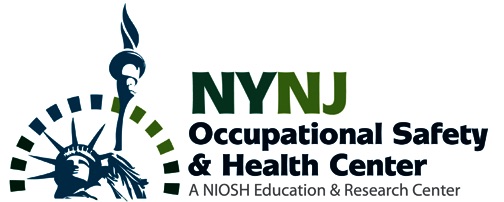Today we completed our 13th historical perspectives tour. Our final stop was at Wightman Specialty Lumber in Portlandville, NY. There we saw the process of turning logs into wooden boards ready for retail. After touring the facilities, we went to a nearby forest where two men from the lumber mill explained forest management, how to pick the best tree for the lumber and for the forest, and all about different species of trees. On the bus ride home, the group was given the opportunity to reflect on the visits and how it changed their perspectives.
Thursday, June 14, 2018
Wednesday, June 13, 2018
Rock of Ages
Day 4 is a wrap. This morning we visited the Rock of Ages granite quarry and mill in Barre, VT. There we were able to look out at the quarry, hear from Rock of Ages safety director and director of visitor services. We visited the mill to see workers moving large slabs and carving pieces. Then we went to Hope Cemetery in Barre to see some of the completed work. Following our site tours, we had a quick bite to eat back in Montpelier before heading over to Oneonta, NY for the night. Tomorrow we will wrap up the tour at Wightman Specialty Lumber in Portlandville, NY.
Tuesday, June 12, 2018
Huhtamaki, Chinet, and Paper Trays
Today we visited Huhtamaki, Inc. a 100 year old company that makes paper products. One of the major lines they create is the Chinet brand paper plates. The Chinet website https://www.mychinet.com/about-us, says "the Chinet brand is made by Huhtamaki. While we’ve enjoyed being the go-to entertaining choice for many generations, we’re always looking forward. We’re working to continue to bring you the kind of innovative products everyone wants to gather around." Huhtamaki also makes paper trays, tray/cup holders, and other products that are used in schools, ball parks, and other places. It was very interesting to see how these products are made, from the scrap paper used to make pulp to the pressing and drying of the products.
We also had a presentation from an occupational physician from MaineGeneral, who spoke about the health and wellness initiatives they are implementing at Huhtamaki and other workplaces across Maine.
A big thanks to John Perry and the staff at Huhtamaki for hosting us today, and Dr. Kenji Saito for his presentation.



We also had a presentation from an occupational physician from MaineGeneral, who spoke about the health and wellness initiatives they are implementing at Huhtamaki and other workplaces across Maine.
A big thanks to John Perry and the staff at Huhtamaki for hosting us today, and Dr. Kenji Saito for his presentation.



Monday, June 11, 2018
Fishing safety and health, Rockland, Maine
Portland, ME and Rockland, ME
Today started with a little adversity. Our day began with a change of plans. The facility in Portland where we were planning to conduct our immersion suits training became unexpectedly unavailable. So we went to our first stop at the Portland Fish Exchange. However, due to several illnesses at the Fish Exchange our guide was not available to host us. So, after identifying several viable options, we travelled to Coast Guard Station Rockland, ME. We were able to conduct our immersion suit training, where we all were able to jump into the water, and see the effectiveness and importance of the suits for fishers. We then went out on the Maine Marine Patrol boat to see how lobster traps are set and pulled. We experienced the health and safety issues lobster fishers face, including noise, ergonomics, and others. I am grateful to the US Coast Guard Station in Rockland and to the Maine Marine Patrol for hosting us, especially with some major changes to our schedule. An awesome day!








Sunday, June 10, 2018
Boott Cotton Museum, Lowell, MA
Our 13thHistorical Perspectives on Occupational Safety and Health tour started today. We have 28 participants on the tour. Our first stop was at the Boott Cotton Mill Museum in Lowell, MA. This is an excellent museum that shows the magnitude of the cotton mills, the work that was conducted to weave the cotton, and the impact it had on workers. Our guide showed us how the looms work, and how to make different patterns in the fabric. We then went to the Mill Girls House, where the workers lived ate. The mill girls were young women who worked in the mills. At the height of the mills, over 8,00 women were employed.
We are now in Portland, Maine, where we will visit the US Coast Guard and Maine Marine Patrol to learn about fishing and the activities around the waterfront
Subscribe to:
Comments (Atom)












